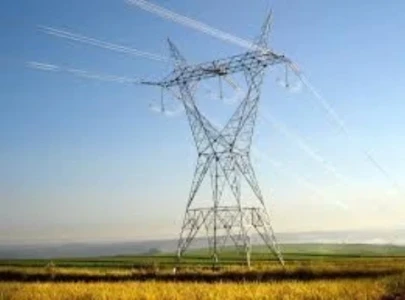Climate Change Strains Global Electricity Networks: A Wake-Up Call

The increasing frequency and intensity of climate-related disasters are placing unprecedented strain on the world's electricity networks, with severe implications for global energy security. According to a recent Bloomberg report, the effects of climate change are pushing many electricity grids to their breaking points, revealing vulnerabilities that threaten the stability and reliability of power supplies across the globe.
Climate Change Impacts on Electricity Networks
Climate change has far-reaching effects on various aspects of human life, and the global electricity grid is no exception. Extreme weather events such as hurricanes, heatwaves, and heavy rainfall are becoming more common and severe, leading to significant challenges for power infrastructure. These conditions can cause widespread outages, damage critical equipment, and disrupt the overall flow of electricity.
For instance, intense heatwaves can strain electricity grids as increased air conditioning use drives up demand. Simultaneously, high temperatures can affect the efficiency of power plants and transmission lines, leading to potential downtimes and reduced capacity. Similarly, severe storms can cause physical damage to power lines, transformers, and substations, leading to prolonged outages and costly repairs.
Vulnerabilities in the Grid
The Bloomberg report highlights several key vulnerabilities in current electricity networks. One major issue is the aging infrastructure of many power grids, which was not designed to withstand the extreme weather conditions prevalent today. This outdated infrastructure is often ill-equipped to handle the increased strain from rising temperatures and more frequent storms, resulting in frequent failures and interruptions.
Another significant concern is the geographical distribution of power generation and transmission facilities. Many regions rely heavily on centralized power plants that are susceptible to localized weather events. When these plants are damaged or incapacitated, it can lead to widespread outages that affect large swaths of the population.
Economic and Social Implications
The economic and social consequences of these disruptions are profound. Frequent power outages can lead to substantial financial losses for businesses, particularly those reliant on continuous electricity for operations. This includes industries such as manufacturing, healthcare, and technology, where even short-term interruptions can have cascading effects.
For households, the impact is equally severe. Prolonged outages can affect essential services such as heating, cooling, and refrigeration, which are crucial for maintaining health and safety. In extreme cases, power failures can lead to the loss of perishable food, spoilage of medications, and other significant inconveniences.
Steps Toward Resilience
Addressing these challenges requires a multifaceted approach to enhance the resilience of electricity networks. One critical step is investing in modernizing infrastructure. Upgrading power lines, substations, and transformers to better withstand extreme weather conditions is essential for reducing the frequency and duration of outages.
Additionally, incorporating more renewable energy sources into the grid can provide greater flexibility and stability. Renewable energy systems, such as solar and wind, can be distributed across various locations, reducing dependence on centralized power plants and improving resilience against localized disruptions.
Another strategy is to improve grid management through advanced technologies. Implementing smart grid solutions that use real-time data and predictive analytics can help utilities better anticipate and respond to potential issues before they escalate into major problems. This includes deploying sensors and automation systems to monitor grid health and optimize energy distribution.
Policy and Planning
Policy measures and strategic planning also play a crucial role in enhancing grid resilience. Governments and regulatory bodies need to develop and enforce standards that require new infrastructure to meet higher resilience criteria. Additionally, investment in research and development for innovative technologies can drive progress in building more robust and adaptable electricity networks.
As climate change continues to accelerate, the need for resilient electricity grids becomes increasingly urgent. The Bloomberg report serves as a stark reminder of the vulnerabilities in our current systems and the pressing need for proactive measures. By investing in modern infrastructure, adopting renewable energy solutions, leveraging advanced technologies, and implementing robust policies, we can work towards creating a more resilient and reliable global electricity network.
In summary, the challenges posed by climate change to global electricity networks are significant and multifaceted. Addressing these challenges requires a comprehensive approach involving infrastructure upgrades, technological advancements, and strategic planning. By taking these steps, we can better equip our power systems to handle the impacts of a changing climate and ensure a stable and reliable energy supply for the future.






